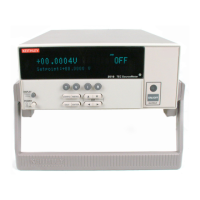4-4 PID Control Concepts Models 2510 and 2510-AT User’s Manual
Proportional-derivative (PD) control
The stability and overshoot problems that occur when a proportional controller is used at
high gain can be minimized by adding a term proportional to the time-derivative of the
error signal as follows:
Here, K
d
is the derivative gain.
Proportional-integral-derivative (PID) control
Although PD control deals well with the overshoot and ringing problems associated with
proportional control, it does not cure the problem with steady-state error. However, it is
possible to eliminate this error while using relatively low proportional gain by adding an
integral term to the control function as follows:
Here, K
i
, the integral gain parameter, is sometimes known as the controller reset level.
This form of function is known as proportional-integral-differential, or PID control for
which the Model 2510 is optimized. The effect of the integral term is to change the TEC
power until the time-averaged value of the temperature error is zero. Figure 4-3 shows the
result of adding the integral term to the control function.
To summarize:
•K
p
, the proportional constant, controls the loop gain.
•K
i
, the integral constant, offsets errors.
•K
d
, the derivative constant, affects the damping rate.
WK
p
T
C
T
S
–()K
d
td
d
T
C
T
S
–()×+×=
WK
p
T
C
T
S
–()K
d
td
d
T
C
T
S
–()K
i
T
C
T
S
–()
∫
×+× td+×=

